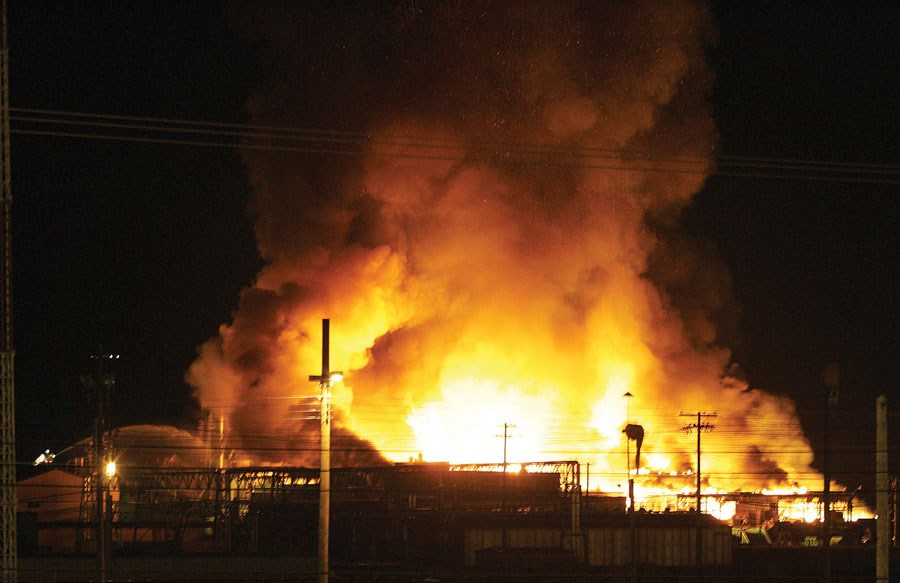A Prince George firefighter said one of the two men killed in the Lakeland Mills explosion nearly three years ago had to be loaded into the back of a pickup truck and driven from the scene to an ambulance stationed on River Road.
Testifying Thursday at the coroner's inquest into the April 23, 2012 blast, Peter Brbot said he found Alan Little outside the mill's northeast corner laying in the mud, exposed and in need of help. Other than a sock on one foot, Little had no clothes on and was so badly burned he was unrecognizable, the inquest heard.
Using a spine board, Little was taken back to a triage station firefighters had set up at the scene where they waited for an ambulance.
But after waiting for what felt like an eternity, but was actually "seven, eight, nine minutes maybe," Brbot said firefighters concluded they should put Little in the back of then Prince George Fire Rescue chief John Lane's pickup truck and take him out onto River Road where an ambulance had been stationed.
Once there, Brbot said they had to wait for a second ambulance to show up before he could be taken away to University Hospital of Northern British Columbia.
Little was conscious but other than some moaning and saying "help me" a few times, he did not say much.
"He looked like he was in a lot of pain and we didn't want to question him too much," Brbot said.
On Wednesday, ambulance paramedic Grant Jameson said he attended to Little as he was taken to hospital.
Although covered in severe burns, Jameson said Little was able to talk and said he was at a machine when there was an explosion and he was thrown. He was "surrounded by fire," the inquest heard, but "crawled and rolled" his way out of the mill.
As a matter of policy, Jameson said paramedics keep their distance from potentially dangerous scenes and remain at the "closest safe spot" until given the go-ahead to advance by dispatch. Brbot testified firefighters and ambulance do not communicate through a common radio channel but instead go through dispatch.
Jameson said there was some concern even about where paramedics had stationed themselves, at Lakeland's River Road entrance, because there was debris on the road.
Jameson said Little was taken straight to the trauma unit at UNHBC before returning to Lakeland to pick up more patients.
Dr. Brian Hillhouse attended to Little once at the hospital. Other than on the soles of his feet, Hillhouse told the inquest on Wednesday that Little was covered in third and even fourth degree burns and suffered burns to his airways.
Hillhouse determined Little had been engulfed in flame and would not survive. He concentrated on easing his pain and giving him some comfort.
In other testimony Thursday, Richard Crank, a longtime millwright at Lakeland, said many improvements to dealing with dust have been incorporated into the new mill, which began operating in December.
They include minimizing the number of flat surfaces where dust can collect by putting peaked roofs on booths and offices, or having their walls run all the way to the ceiling, installing "shedder plates" or angled covers over flat surfaces, and using steel cladding on the walls.
He said there are now three dust collection systems, not one, and dust is sucked from the air downwards, instead of up. Although not perfect, Crank said the new system is a vast improvement over the old one.
Crank, who was critical of using compressed air to blow dust off machinery, said a central vacuum system has been installed but is not yet running. Compressed air only blows dust into other areas or up into the air, Crank said.



